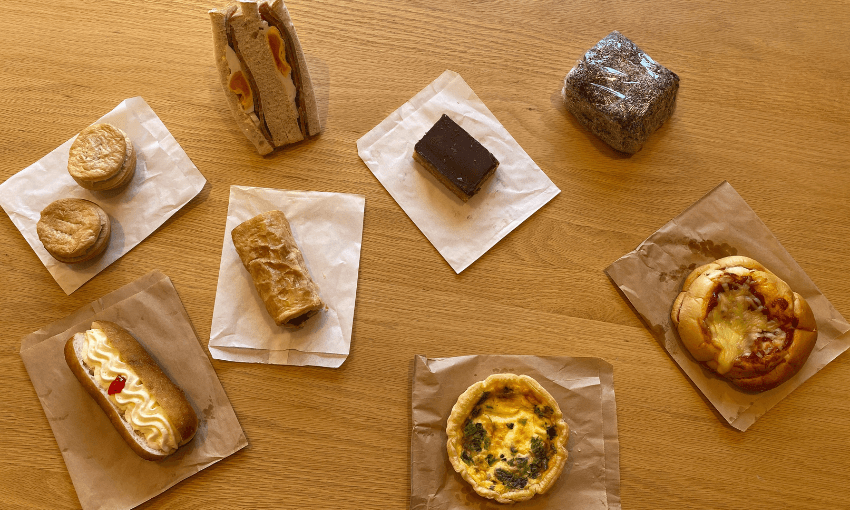In the first of a new series exploring the possibilities (and pitfalls) of a single ingredient, Wyoming Paul highlights the undisputed vege king of spring.
After months of spinning pumpkin, potato, carrot and leek into different meal concoctions, spring brings the relief of a tide of new veges to munch on. Among the springiest is asparagus.
Asparagus is a polarising vegetable with multiple personalities. Many of us will think of “asparagus rolls”, aka tinned asparagus blanketed in white bread and butter, served at Grandparent Day school events, the sad last snack left on the table. If you’re in the lucky 40%, asparagus makes your urine smell like Rotorua. Then there’s its gourmet albino cousin, white asparagus, which is produced like veal – grown so that it never sees the sun or develops chlorophyll – and sold at double the price.
A disfavoured culinary relic, like the mini gherkin? An unkind vegetable that makes you fear the toilet? Or a delicacy and symbol of wealth? Asparagus is all of the above, a rich tapestry, and like all vegetables it can be awful or excellent – depending on how you prepare it.
Where to find it
After a rough start to the season – the early October cold snap turned entire fields of asparagus into unfortunate pointed ice blocks – you can now find asparagus in most supermarkets, usually sold in 250g bunches.
As I write it’s $3.70 at Countdown, $4.99 at New World, and $3.49 for one or $6 for two bunches at Pak’nSave. Add an extra $3 for organic, and prepare to pay double for that rare white asparagus when it does appear.
Asparagus will only grace store shelves until about mid to late-December, so the time is nigh for making the most (and avoiding the worst) of it.
How to make it terrible
Like many vegetables (carrots, broccoli, cabbage, brussels sprouts), asparagus shows its worst side when boiled. Unfortunately, one of its best sides is also brought out… when boiled.
It’s a matter of timing and the thickness of your asparagus. Four minutes of boiling? Perfect. Ten minutes of boiling? Ruined. Lose track of time, and you’re going from tender, slightly crunchy, delicate asparagus, to a slimy stringy mess that will put you off this springtime veg for years to come.
The other way to put yourself off? Eating those fibrous, woody ends. No one likes chewing on a mouthful of twigs.
How to make it amazing
There are plenty of wonderful ways to prepare or cook asparagus – roasting, sautéing, blanching, grilling. You can serve asparagus as a side dish to pasta, risotto, fish or meat; use it raw or blanched (quick-boiled then plunged in ice water) as the hero of a spring salad; or prepare asparagus quiches or tarts.
Regardless of cooking technique, you should always remove those hard, woody asparagus ends. It’s quick to slice them all off at once, removing the last 5cm where the asparagus is paler – but don’t. Snapping these off by hand is more accurate for getting rid of the woody part of the stalk, and it’s arguably the world’s most satisfying vegetable preparation experience.
Feel along the asparagus to find the natural break where the woody end becomes supple, and bend until snap. It’s like the edible world’s answer to stepping on an extra-crunchy leaf in autumn.
Next is cooking. With so many options, I’ll bring it back to that simple but risky task of boiling. To do it right, bring a pot of salted water to the boil, then lower in the asparagus and simmer for between 2 minutes (slim asparagus) and 5 minutes (thick asparagus). Whip them out once easily pierced with a fork and still slightly crunchy – and if you’re not sure if it’s cooked, take a bite. Rinse under cool water to stop the cooking process.
Boiled asparagus is fabulous tossed in butter, lemon juice and salt, or just sprinkled with parmesan and black pepper.
My favourite asparagus recipe, though, is this asparagus pasta which makes a creamy sauce with the boiled stems and uses the tips whole. Quick, simple, creamy, lemony – it’s a great dish that makes the most of your asparagus with only a few ingredients.
Wyoming Paul is the co-founder of Grossr meal kits.





